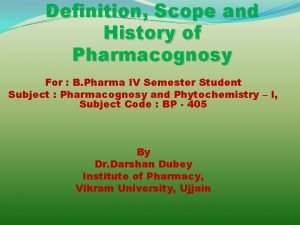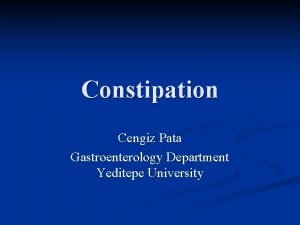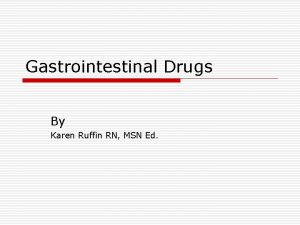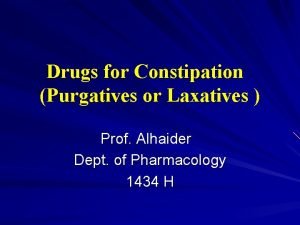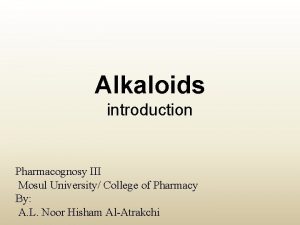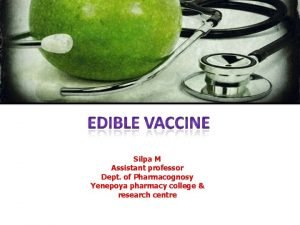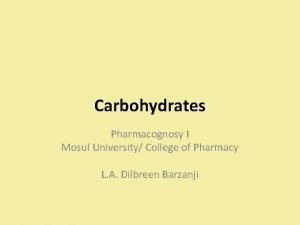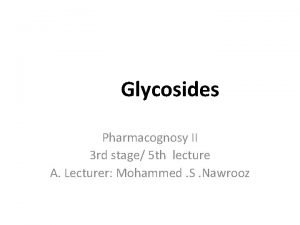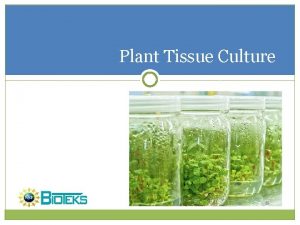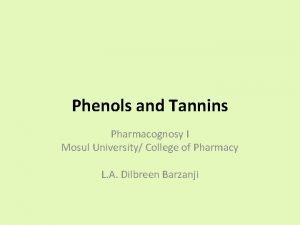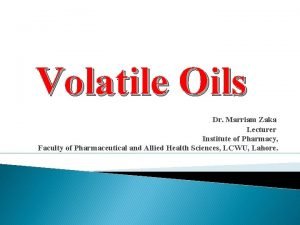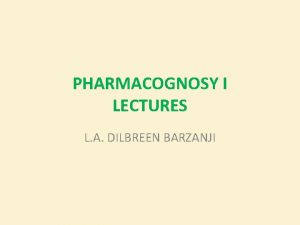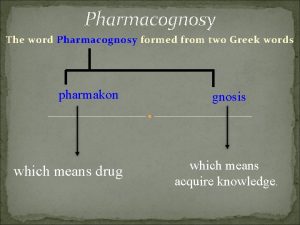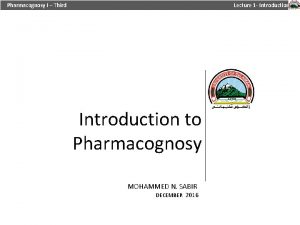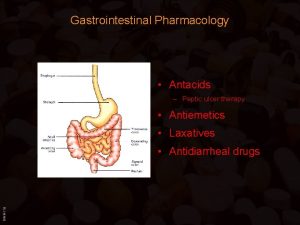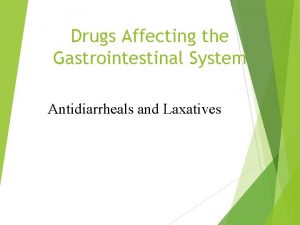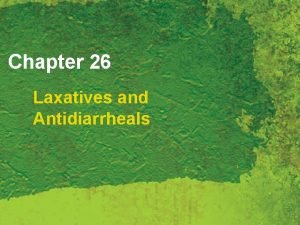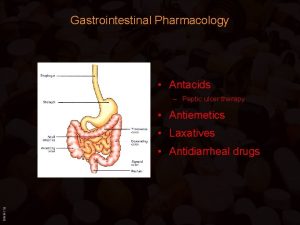A SEMINAR ON Laxatives PHARMACOGNOSY D C PI













- Slides: 13


A SEMINAR ON “Laxatives” PHARMACOGNOSY D. C. P-I A. S. S. College of Pharmacy, Beed 2012 -2013

LAXATIVES Latin: Laxare: - means to -loosen Laxatives are the drugs which loose the bowels (intestine) Depending upon the intensities of drug effects they are categorized as follows 1. Laxatives: suggest the elimination of soft formed stools (mild purgatives) ex. Senna, isapgol, liquid paraffin 2. Purgatives: suggest more fluid evaluation ex. Castor oil, aloe, rhubarb, cascara 3. Drastics: act intensely by irritating the mucous membrane of intestine ex. Jalap, podophyllum, colocynth 4. Hydrogogues: produce fluid motions ex. croton oil, colocynth The mechanism of action of laxatives may be either bulk forming, irritant or emolllient depending upon the chemical nature of active constituent.


Identification ümixes with half its volume of light petroleum ether (40 - 60°) üsoluble in alcohol and insoluble in mineral oil Uses cathartic, lubrication, soap and textile industry, in preparation of paints, enamel, varnishes, grease, polishes, printing ink, spirit in preparation of ointments, creams and polishes

RHUBARB Synonyms: - Radix rhei, Rheum, Revandchini. Biological Source : It dried rhizome of Rheum emodi Wall (Indian rhubarb) family Polygonaceae. Geographical Source: obtained both from wild and cultivated species in south east China to Tibet and Korea. Also in Kashmir and Sikkim in India Collection and Preparation: - The drug mostly obtained from wild plants. High altitude (more than 3, 000 metres) drought resistant plant and propagated by seeds or from rhizomes rhizome portion dug up in spring or autumn Rhizomes cleaned, decorticated and dried Drug obtained from 6 -10 year old plants before flowering season marketed with cortex intact or partially decorticated. Macroscopic Characters rhizomes -barrel shaped, cylindrical or conical(8 -10 cm) length and 4 cm thickness. sharp odour and bitter astringent taste. pale brown to red in colour. Fracture-irregular granular, abnormal vascular bundles Microscopic Characters pieces -show holes, imedullary rays - brownish red on surface Fracture-vascular bundles, medullary rays

ü ü Chemical Constituents contains anthraquinone glycosides (2 to 4. 6 per cent ) Anthraquinones with a carboxyl group like rhein and glucorhein. Anthraquinones without a carboxyl group like aloe-emodin, chrysophanol, physcion Palmidin A , Palmidin B, Palmidin C gallic acid as glucogallin, along with tannin, catechin an epicatechin also contains rheinolic acid, pectin, starch, fat and calcium oxalate Chemical Tests gives positive test for modified Borntrager's test. red colour with addition of alkalies due to presence of anthraquinoi glycosides Standards Total ash: Not more than 12. 0 % Acid insoluble ash: Not more than 1 % Foreign organic matter: Not more than 1 % Dilute alcohol soluble extractive : Not less than 30. 0 % Uses as bitter stomachic, diarrhoea, purgative, estrogenic activity


CASTOR OIL Synonym Ricinusoil Biological Source It is fixed oil obtained by cold expression of seeds of Ricinus communis, family Euphorbiaceae Geographical Source India (2 nd producer, A. P. 60%), Brazil, Thailand, U. S. A. and Andhra Pradesh, Gujarat, and Karnataka Description Colour - pale yellow or colourless Odour - characteristic. Taste - bland to slightly acrid and usually nauseating It is a viscous and transparent liquid

Standards ØWeight per ml -0. 945 to 0. 965 g ØAcid value -not more than 2 ØOptical rotation - + 3. 5° and + 6. 0° ØViscosity - 6 -8 poises ØRefractive index- 1. 4758 and 1. 4798 Chemical Constituents chiefly - triglyceride of ricinoleic acid (80%) Other glycerides and fatty acids s. a. linoleic, stearic and isostearic acids


ISPAGHULA Synonyms: isapgol, isabgol Biological source: It consists of dried seeds of the plant known as Plantogo ovata Forskal belonging to family Plantaginaceae. Geographical distribution: In india mainly in gujarat, punjab, south rajasthan. Morphological characteristics: Colour: pinkish-grey or brown Odour: none Taste: mucilaginous, bland Shape: ovate like Size: 10 -35 mm length and 1 to 1. 75 mm in width

Chemical constituents: Contain mucilage, pentosan, sldobionic acid, rhamnose, fixed oil, and proteins Uses: Demulcent, laxative, emollinent, dysentery, in prep tablets and as stabilizer in icecream industry, in rheumatic pains
 Pharmacognosy definition history scope and development
Pharmacognosy definition history scope and development What are the different types of laxatives
What are the different types of laxatives Laxative agent
Laxative agent Laxatives side effects
Laxatives side effects Laxatives side effects
Laxatives side effects Uses of alkaloids in pharmacognosy
Uses of alkaloids in pharmacognosy Edible vaccines in pharmacognosy
Edible vaccines in pharmacognosy Pharmacognosy alkaloids
Pharmacognosy alkaloids Sterculia gum pharmacognosy
Sterculia gum pharmacognosy Couramin
Couramin Application of plant tissue culture in pharmacognosy
Application of plant tissue culture in pharmacognosy Tannins in pharmacognosy
Tannins in pharmacognosy Define pharmacognosy
Define pharmacognosy What is volatile oil in pharmacognosy
What is volatile oil in pharmacognosy
